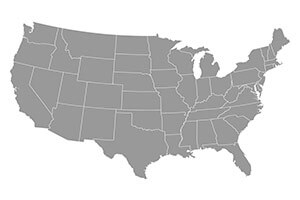
UNITED STATES
As reported by author Ron Phipps in his excellent “International Honey Market Update” this month, “If the combination of 1) more powerful and sophisticated technologies for assessing adulteration and 2) climate change and other environmental factors reducing both total production and productivity/hive of honey manifest themselves during 2017 and 2018, it will become crystal clear that a new Point of Inflection has indeed been reached.” Dr. Phipps believes these factors will bring an upswing in the global honey market which will encourage a stronger bulk honey market in the United States. This, in turn, will mean better honey prices for beekeepers across the board. Right now, local retail and small-lot wholesale demand and prices have not been impacted significantly by cheap imported honey. However, a continuation of the downward trend in world honey prices and honey quality caused by cheap foreign honey would eventually impact all honey sales, as well as the excellent reputation of honey as a superior food.
Coming off a mild fall, beekeepers across the nation were preparing for the winter season and hoped their colony losses would not be large. Early reports suggest that colonies went into winter with good bee populations, but that winter stores were not adequate in many cases. This has brought about more feeding than normal, even in the southern states and California. In addition, beekeepers in some states have reported more problems with heavy varroa mite infestations and mite-vectored viruses which have reduced bee populations or resulted in colony collapse disorder-like symptoms. Much depends on the severity of the winter weather in January, February and March, as well as ground moisture conditions this coming spring. Meanwhile, thousands of colonies are being prepared for the California almond pollination season, which will get underway in February. Demand for colonies is expected to be strong again this season, especially in view of a stronger world market for almonds and improved prices.
NORTHEAST
Reporters told us that they were hoping for another mild winter to help colony overwintering. Indeed, October and much of November were on the mild side, but beekeepers were bracing for the cold, windy conditions that come in December, January and February. A number of beekeepers fed their colonies this past fall due to poor to moderate fall flows. In addition, some beekeepers added winter wraps to their colonies to help overwintering. Moisture conditions have been helped by fall rains, but some states are still on the dry side. Cases of colony collapse disorder, mite-vectored viruses and occasional outbreaks of small hive beetles were all problematical for area beekeepers hoping to bring a higher percentage of colonies through the coming winter.
Although our reporters in this area have heard about the weaker wholesale honey market, few producers have been affected by it due to the excellent demand for local honey. Some grocery story prices for generic honey have declined, but most local honey brands are still demanding and receiving top dollar for their product.
MIDEAST
Very mild, but dry weather continued well into the fall season in these area states. The good result was that beekeepers could continue to feed and treat colonies longer, but the bad result was that the warmer weather kept colonies more active so that they ate more stores. In some extreme cases beekeepers even reported colony starvation during the fall season. In other reports, beekeepers had heavier varroa populations and more incidents of parasitic mite syndrome, in addition to more small hive beetle outbreaks. Beekeepers along the North Carolina coast were also still tallying up their colony losses from Hurricane Matthew. Meanwhile, in late November Tennessee beekeepers experienced severe forest fires and then stormy weather accompanied by deadly tornadoes.
Honey crops were not great in this area, so beekeepers have had no trouble selling their new crop honey at the local level, especially during the holiday season. None of our reporters felt that their pricing had been impacted yet by cheaper imported honey prices, especially since consumers prefer locally produced honey and varietals.
SOUTHEAST
A combination of dry conditions, unsettled weather, varroa mites, viruses, and small hive beetles have made beekeeping difficult over the last couple of months. Not only have many beekeepers had to feed colonies heavily, but at times heavy varroa mite infestations have blindsided beekeepers resulting in many deadouts. Thousands of colonies are overwintered in Florida and other Southeastern states and in some cases these colonies are in dire condition, especially for those bees that will be moved across country to the almond bloom in California at the end of this month. Hurricane Matthew reduced the important Brazilian Pepper flow significantly along the eastern Florida coast. In late November severe storms moved through Mississippi and Alabama causing much damage and several fatalities.
The wholesale market has begun to pick up some, but cheaper imported honey is still holding bulk honey prices down. Beekeepers have been quoted as low as 95 cents for new crop pepper honey to as high as $1.75 to $2.00 for wildflower honey. Retail honey sales have remained mostly strong, although at times generic honey sold in grocery stores has been discounted to move it off the shelves. Local and varietal honey continue to sell very well.
SOUTHWEST
The fall season was characterized by warm, dry conditions interspersed with periods of stormy weather. Colonies are in fair to good condition, but in a number of reports beekeepers said that they were feeding more than normal. Early nectar sources will be maple, willow and other early bloomers. Beekeepers hope that adequate rains will come to insure good spring wildflower growth. Professional pollinators will be moving colonies to California for almonds in January.
Much of the new crop honey has been sold, but the wholesale honey market remains weaker than last year due to plentiful cheap imported honey. On the other hand, …


